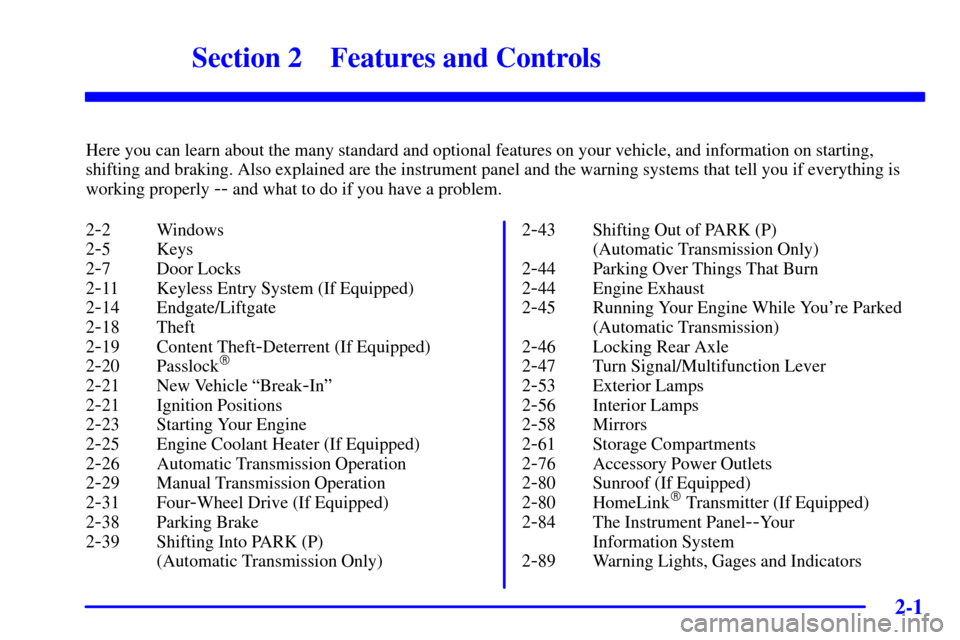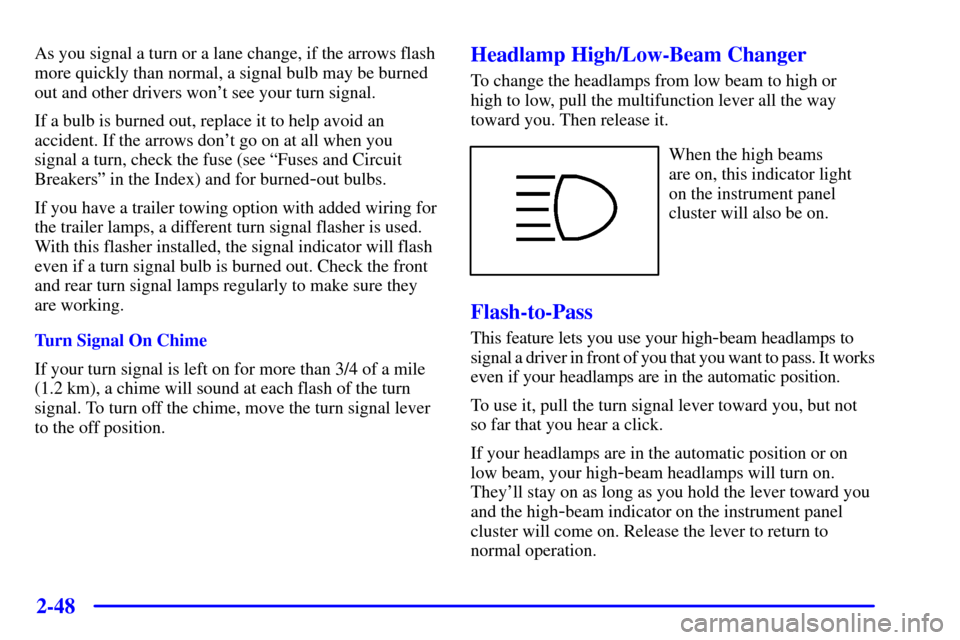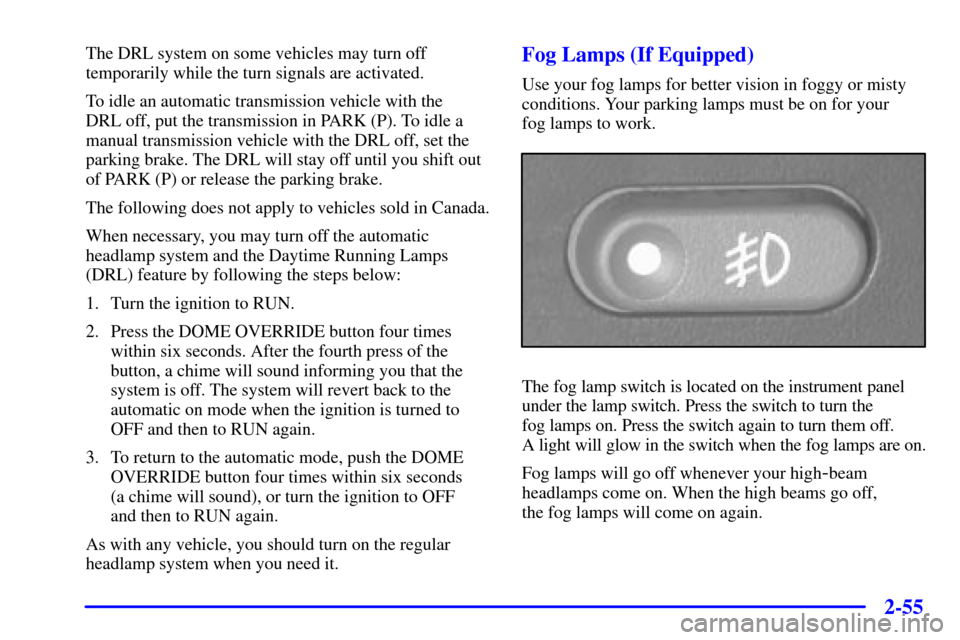Page 4 of 448
Table of Contents
Windows
Keys and Door Locks
Remote Keyless Entry System (If Equipped)
Endgate/Liftgate
Automatic Transmission (If Equipped)
Manual Transmission (If Equipped)
Four-Wheel Drive (If Equipped)
Parking Brake
Tilt Wheel
Turn Signal/Multifunction Lever
Windshield WipersCruise Control
Exterior and Interior Lamps
Mirrors
Storage Compartments
Luggage Carrier (If Equipped)
Accessory Power Outlets
OnStar® System (If Equipped)
Sunroof (If Equipped)
HomeLink® Transmitter (If Equipped)
Instrument Panel, Warning Lights and Gages Seats and Seat Controls
Safety BeltsAir Bag Systems
Restraint Systems for Children
Section
1
Section
2
Seats and Restraint Systems
Features and Controls
ii
Page 11 of 448

ix
For example,
these symbols
are used on an
original battery:
CAUTION
POSSIBLE
INJURY
PROTECT
EYES BY
SHIELDING
CAUSTIC
BATTERY
ACID COULD
CAUSE
BURNS
AVOID
SPARKS OR
FLAMES
SPARK OR
FLAME
COULD
EXPLODE
BATTERY
These symbols
are important for
you and your
passengers
whenever your
vehicle is driven:
CHILD
RESTRAINT
TOP STRAP
ANCHOR
DOOR LOCK
UNLOCK
FASTEN
SEAT
BELTS
POWER
WINDOW
AIR BAG
These symbols
have to do with
your lamps:
MASTER
LIGHTING
SWITCH
TURN
SIGNALS
PARKING
LAMPS
HAZARD
WARNING
FLASHER
DAYTIME
RUNNING
LAMPS
FOG LAMPS
These symbols
are on some of
your controls:
WINDSHIELD
WIPER
WINDSHIELD
WASHER
WINDSHIELD
DEFROSTER
REAR
WINDOW
DEFOGGER
VENTILATING
FAN
These symbols
are used on
warning and
indicator lights:
ENGINE
COOLANT
TEMP
BATTERY
CHARGING
SYSTEM
BRAKE
COOLANT
ENGINE OIL
PRESSURE
ANTI-LOCK
BRAKES
Here are some
other symbols
you may see:
FUSE
LIGHTER
HORN
FUEL
Vehicle Symbols
These are some of the symbols you may find on your vehicle. Also see ªWarning Lights and Gagesº in the Index.
Page 69 of 448

2-
2-1
Section 2 Features and Controls
Here you can learn about the many standard and optional features on your vehicle, and information on starting,
shifting and braking. Also explained are the instrument panel and the warning systems that tell you if everything is
working properly
-- and what to do if you have a problem.
2
-2 Windows
2
-5 Keys
2
-7 Door Locks
2
-11 Keyless Entry System (If Equipped)
2
-14 Endgate/Liftgate
2
-18 Theft
2
-19 Content Theft-Deterrent (If Equipped)
2
-20 Passlock�
2-21 New Vehicle ªBreak-Inº
2
-21 Ignition Positions
2
-23 Starting Your Engine
2
-25 Engine Coolant Heater (If Equipped)
2
-26 Automatic Transmission Operation
2
-29 Manual Transmission Operation
2
-31 Four-Wheel Drive (If Equipped)
2
-38 Parking Brake
2
-39 Shifting Into PARK (P)
(Automatic Transmission Only)2
-43 Shifting Out of PARK (P)
(Automatic Transmission Only)
2
-44 Parking Over Things That Burn
2
-44 Engine Exhaust
2
-45 Running Your Engine While You're Parked
(Automatic Transmission)
2
-46 Locking Rear Axle
2
-47 Turn Signal/Multifunction Lever
2
-53 Exterior Lamps
2
-56 Interior Lamps
2
-58 Mirrors
2
-61 Storage Compartments
2
-76 Accessory Power Outlets
2
-80 Sunroof (If Equipped)
2
-80 HomeLink� Transmitter (If Equipped)
2
-84 The Instrument Panel--Your
Information System
2
-89 Warning Lights, Gages and Indicators
Page 77 of 448

2-9
Your vehicle left the factory programmed to have no
doors lock and none of the doors unlock. You can set the
automatic lock feature to lock all the doors when the
vehicle speed is greater than 15 mph (24 km/h) for
two seconds, and then unlock all the doors once the key
is removed from the ignition. The following instructions
detail how to program your door locks differently than
the factory setting. Choose one of the four programming
options listed above before entering the program mode.
To enter the program mode you need to do the following:
1. Begin with the ignition in OFF. Then pull the turn
signal/multifunction lever toward you and hold it
there while you perform the next step.
2. Turn the key to RUN and OFF twice. Then, with the
key in OFF, release the turn signal/multifunction
lever. Once you do this, you will hear the lock switch
lock and unlock and a 30 second program timer
will begin.3. You are now ready to program the automatic
door locks. Select one of the four programming
options listed above, and follow the instructions.
You will have 30 seconds to begin programming.
If you exceed the 30 second limit, the locks will
automatically lock and unlock to indicate that you
have left the program mode. If this occurs, repeat the
procedure beginning with Step 1.
You can exit the program mode any time by turning the
ignition to RUN (the locks will automatically lock and
unlock to indicate that you are leaving the program mode).
If the lock/unlock switches are not pressed while in the
programming mode, the current auto lock/unlock setting
will not be modified.
See your dealer for more information.
Page 114 of 448
2-46
Locking Rear Axle
If your vehicle has this feature, your locking rear axle
can give you additional traction on snow, mud, ice, sand
or gravel. It works like a standard axle most of the time,
but when one of the rear wheels has no traction and
the other does, this feature will allow the wheel with
traction to move the vehicle.
Horn
To sound the horn, press the horn symbols on the
steering wheel pad.
Tilt Wheel (If Equipped)
If you have the tilt steering
wheel, you should adjust
the steering wheel before
you drive. The tilt lever is
located on the driver's side
of the steering column,
under the turn signal lever.
You can raise it to the highest level to give your legs
more room when you enter and exit the vehicle.
To tilt the wheel, hold the steering wheel and pull
the lever toward you. Move the steering wheel to a
comfortable level, then release the lever to lock the
wheel in place.
Do not adjust the steering wheel while driving.
Page 115 of 448
2-47
Turn Signal/Multifunction Lever
The lever on the left side of the steering column
includes the following:
�Turn and Lane Change Signals
�Headlamp High/Low
-Beam Changer
�Flash
-to-Pass
�Windshield Wipers
�Windshield Washer
�Cruise Control (If Equipped)
Turn and Lane Change Signals
The turn signal has two upward (for right) and two
downward (for left) positions. These positions allow you
to signal a turn or a lane change.
To signal a turn, move the lever all the way up or
down. When the turn is finished, the lever will
return automatically.
An arrow on the instrument
panel cluster will flash in
the direction of the turn
or lane change.
To signal a lane change, just raise or lower the lever
until the arrow starts to flash. Hold it there until you
complete your lane change. The lever will return by
itself when you release it.
Page 116 of 448

2-48
As you signal a turn or a lane change, if the arrows flash
more quickly than normal, a signal bulb may be burned
out and other drivers won't see your turn signal.
If a bulb is burned out, replace it to help avoid an
accident. If the arrows don't go on at all when you
signal a turn, check the fuse (see ªFuses and Circuit
Breakersº in the Index) and for burned
-out bulbs.
If you have a trailer towing option with added wiring for
the trailer lamps, a different turn signal flasher is used.
With this flasher installed, the signal indicator will flash
even if a turn signal bulb is burned out. Check the front
and rear turn signal lamps regularly to make sure they
are working.
Turn Signal On Chime
If your turn signal is left on for more than 3/4 of a mile
(1.2 km), a chime will sound at each flash of the turn
signal. To turn off the chime, move the turn signal lever
to the off position.
Headlamp High/Low-Beam Changer
To change the headlamps from low beam to high or
high to low, pull the multifunction lever all the way
toward you. Then release it.
When the high beams
are on, this indicator light
on the instrument panel
cluster will also be on.
Flash-to-Pass
This feature lets you use your high-beam headlamps to
signal a driver in front of you that you want to pass. It works
even if your headlamps are in the automatic position.
To use it, pull the turn signal lever toward you, but not
so far that you hear a click.
If your headlamps are in the automatic position or on
low beam, your high
-beam headlamps will turn on.
They'll stay on as long as you hold the lever toward you
and the high
-beam indicator on the instrument panel
cluster will come on. Release the lever to return to
normal operation.
Page 123 of 448

2-55
The DRL system on some vehicles may turn off
temporarily while the turn signals are activated.
To idle an automatic transmission vehicle with the
DRL off, put the transmission in PARK (P). To idle a
manual transmission vehicle with the DRL off, set the
parking brake. The DRL will stay off until you shift out
of PARK (P) or release the parking brake.
The following does not apply to vehicles sold in Canada.
When necessary, you may turn off the automatic
headlamp system and the Daytime Running Lamps
(DRL) feature by following the steps below:
1. Turn the ignition to RUN.
2. Press the DOME OVERRIDE button four times
within six seconds. After the fourth press of the
button, a chime will sound informing you that the
system is off. The system will revert back to the
automatic on mode when the ignition is turned to
OFF and then to RUN again.
3. To return to the automatic mode, push the DOME
OVERRIDE button four times within six seconds
(a chime will sound), or turn the ignition to OFF
and then to RUN again.
As with any vehicle, you should turn on the regular
headlamp system when you need it.Fog Lamps (If Equipped)
Use your fog lamps for better vision in foggy or misty
conditions. Your parking lamps must be on for your
fog lamps to work.
The fog lamp switch is located on the instrument panel
under the lamp switch. Press the switch to turn the
fog lamps on. Press the switch again to turn them off.
A light will glow in the switch when the fog lamps are on.
Fog lamps will go off whenever your high
-beam
headlamps come on. When the high beams go off,
the fog lamps will come on again.